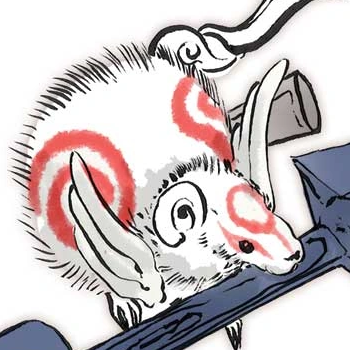So, say I get a set of chromosomes from my Mum which contains the X chromosome and the same from my Dad, but with the Y chromosome. I now have two sets of the same 22 chromosomes, plus an X and a Y.
For chromosome number one for example, is everything from my Dad’s side activated? My Mum’s? Or is is a random selection of genes within each chromosome?
And does the X chromosome do anything for me, or is it turned off, and only used if I pass it on to the next generation?
Follow up question: I believe that women actually recombine their X chromosomes when passing these on, but men can’t recombine X and Y. So everything on your Dad’s side stays the same. Does this have any impact? For example are you more likely to inherit genetic defects from your Dad’s side?


Thank you for clarifying those misconceptions about what recessive and dominant are getting at. A gene isn’t really dominant or recessive. A phenotype (some trait in the organism like blue eyes or a certain disease) can be dominant or recessive though and results from changes in a gene. The same gene could have many different possible mutations, some with dominant effects, some with recessive effects, or some with no effects, depending on the change in the gene and the phenotype.
To go further on that, many recessive diseases are because just one functional copy of many genes are fine from your body’s perspective. Many recessive diseases are due to loss of function of a gene or its protein product, a gene that for a variety of potential reasons no longer leads to a functional protein. Often your body can get by with just one working gene making protein, though both gene copies are generally always being transcribed and trying to be turned into functional protein.
One big exception to this is the x chromosome. Males only have one x and have a y instead of a second x. The y is very tiny and has very few genes compared to the x, quite different from other chromosome pairs which generally just have copies of all the same genes on each other. Early in embryo development for xx individuals, one of the x chromosomes is generally inactivated and not expressed very much, otherwise xx individuals would have double the gene products of all those different genes compared to males, which the body is not expecting for x genes like it does for all the other genes that have a second copy.
https://en.m.wikipedia.org/wiki/X-inactivation
If you go even further you also get into the idea of penetrance. A gene codes for a protein, but that protein doesn’t exist in isolation, it interacts with lots of other proteins coded by other genes in the body, plus the environment. So for some genetic changes it might be a 100% chance at leading to a certain phenotype (like a disease or a specific trait), or it could be less, like only 70% or 30% chance or something of someone with that change getting that trait, even if it’s still “dominant” (meaning only one gene copy with that change is needed to express the trait).
Best explanation so far. Nice work.
A couple of side points. OP’s X chromosome is definitely expressed. It has many genes that are essential to both men and women. It’s genes are not exclusively relating to sex differences. In fact, far from it.
Sex determination in humans is due (mostly) to a few genes on the Y chromosome. These both determine which sex organs will develop and also are critical for male fertility.
One of the major consequences of having a Y chromosome that doesn’t recombine with it’s partner X chromosome is that the Y chromosome has a tendency to lose genes and shrink over evolutionary times. This is prevented on chrX because it can recombine in females. It happens on chrY because there is little mechanistically to prevent it, and mutations resulting in loss are more common than those resulting in gain.